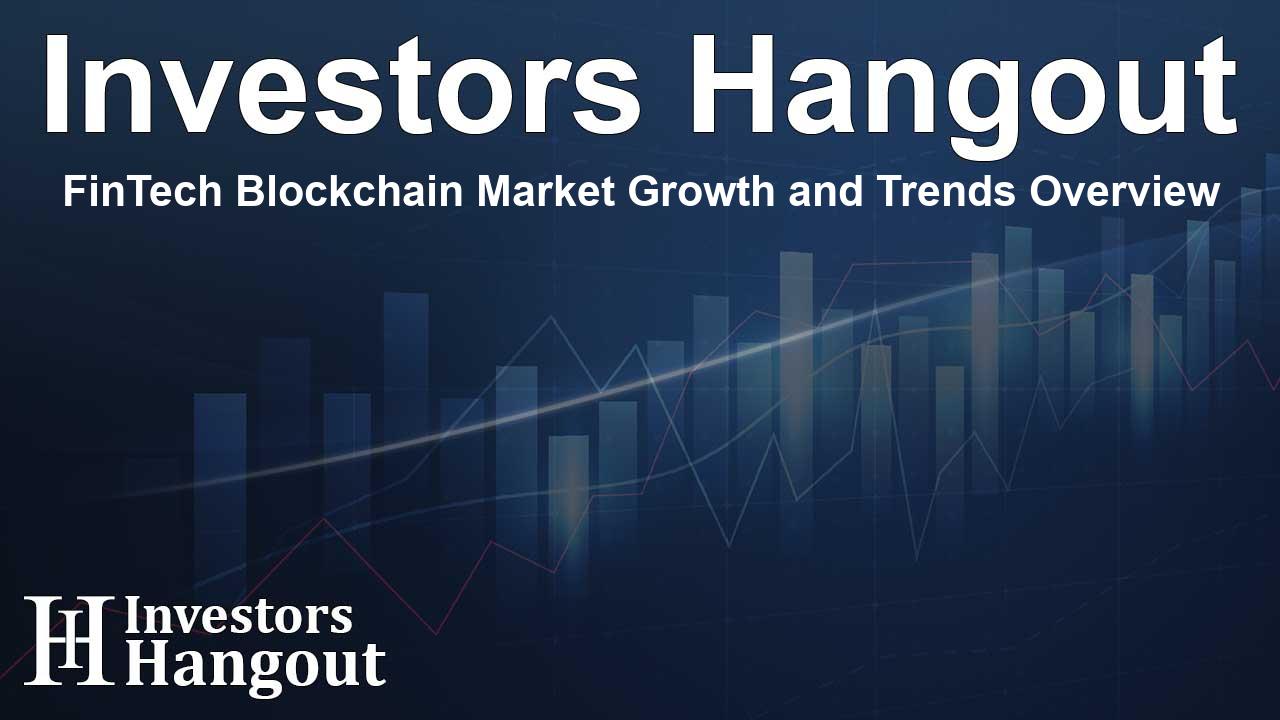FinTech Blockchain Market Growth and Trends Overview

Understanding the FinTech Blockchain Market
The FinTech blockchain market has witnessed remarkable growth in recent years, marking a significant shift in financial technology. Recent reports indicate that this sector is projected to expand from $2.94 billion in 2023 to $4.36 billion in the following year, reflecting a compound annual growth rate (CAGR) of 48.1%. This growth is not just a fad; it stems from a variety of factors such as enhanced security measures, reduced costs, and increased efficiency across financial services.
Key Drivers of Market Growth
As we look ahead, the potential for continued growth in the fintech blockchain market remains robust. Analysts anticipate that by 2028, the market could reach as high as $21.05 billion, driven by the increasing demand for cross-border payments, rising investments, and an ever-growing consumer desire for privacy and control over their financial transactions. Furthermore, advancements in technology and regulatory compliance will play crucial roles in shaping this landscape.
Trends Shaping the Future of FinTech
Several trends are emerging that are expected to drive the fintech blockchain market forward. These trends include:
- The rapid evolution of decentralized finance (DeFi), which offers users more control and flexibility in managing their assets.
- The integration of artificial intelligence (AI) and machine learning (ML) into blockchain applications, enhancing efficiency and predictive capabilities.
- The advent of central bank digital currencies (CBDCs), which signify a new era in monetary policy and digital transactions.
- Increased interoperability between different blockchain networks, allowing for smoother operations and transactions.
- The expanded use of blockchain technology in supply chain management, adding transparency and security to logistics operations.
These trends are being fueled by an increasingly tech-savvy consumer base eager for innovative financial solutions.
The Impact of Cryptocurrency Adoption
The rising adoption of cryptocurrencies further accentuates the growth of the fintech blockchain market. Cryptocurrencies, which are digital assets secured by cryptography, have gained popularity due to their benefits, including lower transaction costs and faster processing times. Recent surveys have indicated a significant rise in cryptocurrency ownership among adults, with a stunning 40% now holding digital assets, pointing to a burgeoning market.
Innovative Solutions in Financial Services
Key players in the fintech blockchain landscape are tirelessly working on innovative solutions to meet market demands. For instance, companies are developing blockchain-based platforms focused on areas like motor insurance, enhancing transaction security, and improving transparency. One notable initiative is that of XA Group, which launched a digital blockchain platform called Addenda. This platform is designed to streamline the reconciliation of motor recovery receivables among insurers, addressing the challenges posed by traditional paper-based processes.
Strategic Movements and Acquisitions
In a notable strategic move, JanOne Inc. has recently acquired ALT 5 Sigma Inc., a fintech company noted for its advancement in blockchain technologies related to trading and settlement processes. This acquisition exemplifies how companies are diversifying their offerings and capitalizing on the growth opportunities presented by next-generation blockchain technologies.
Regional Insights
Geographically, the Asia-Pacific region has emerged as the largest market for fintech blockchain, while North America is poised to be the fastest-growing area in the upcoming years. These regions are expected to witness significant developments in market characteristics, competitive landscapes, and the overall growth trajectory as they adapt to new technological advancements.
Comprehensive Market Analysis
The report on the fintech blockchain market includes an in-depth analysis of market characteristics, size, segmentation, and competitive dynamics. It also outlines the key trends expected to shape the market over the next decade. By focusing on various parameters such as organization size, application types, and industry verticals, the report provides comprehensive insights for stakeholders and investors.
Frequently Asked Questions
What is driving the growth of the fintech blockchain market?
The growth is primarily driven by increased security, efficiency, regulatory compliance, and the adoption of cryptocurrencies.
What role do CBDCs play in the fintech blockchain landscape?
CBDCs are emerging as digital alternatives to traditional currencies, enhancing the efficiency and security of digital transactions.
Which regions lead in the fintech blockchain market?
Asia-Pacific is currently the largest market, with North America expected to be the fastest-growing region.
What are the major trends influencing the fintech blockchain market?
Key trends include advancements in blockchain technology, the rise of decentralized finance (DeFi), and the integration of AI and ML.
Who are the key players in the fintech blockchain space?
Major companies include Microsoft, Amazon Web Service Inc., IBM, and Binance Holdings Limited, among others.
About Investors Hangout
Investors Hangout is a leading online stock forum for financial discussion and learning, offering a wide range of free tools and resources. It draws in traders of all levels, who exchange market knowledge, investigate trading tactics, and keep an eye on industry developments in real time. Featuring financial articles, stock message boards, quotes, charts, company profiles, and live news updates. Through cooperative learning and a wealth of informational resources, it helps users from novices creating their first portfolios to experts honing their techniques. Join Investors Hangout today: https://investorshangout.com/
Disclaimer: The content of this article is solely for general informational purposes only; it does not represent legal, financial, or investment advice. Investors Hangout does not offer financial advice; the author is not a licensed financial advisor. Consult a qualified advisor before making any financial or investment decisions based on this article. The author's interpretation of publicly available data shapes the opinions presented here; as a result, they should not be taken as advice to purchase, sell, or hold any securities mentioned or any other investments. The author does not guarantee the accuracy, completeness, or timeliness of any material, providing it "as is." Information and market conditions may change; past performance is not indicative of future outcomes. If any of the material offered here is inaccurate, please contact us for corrections.